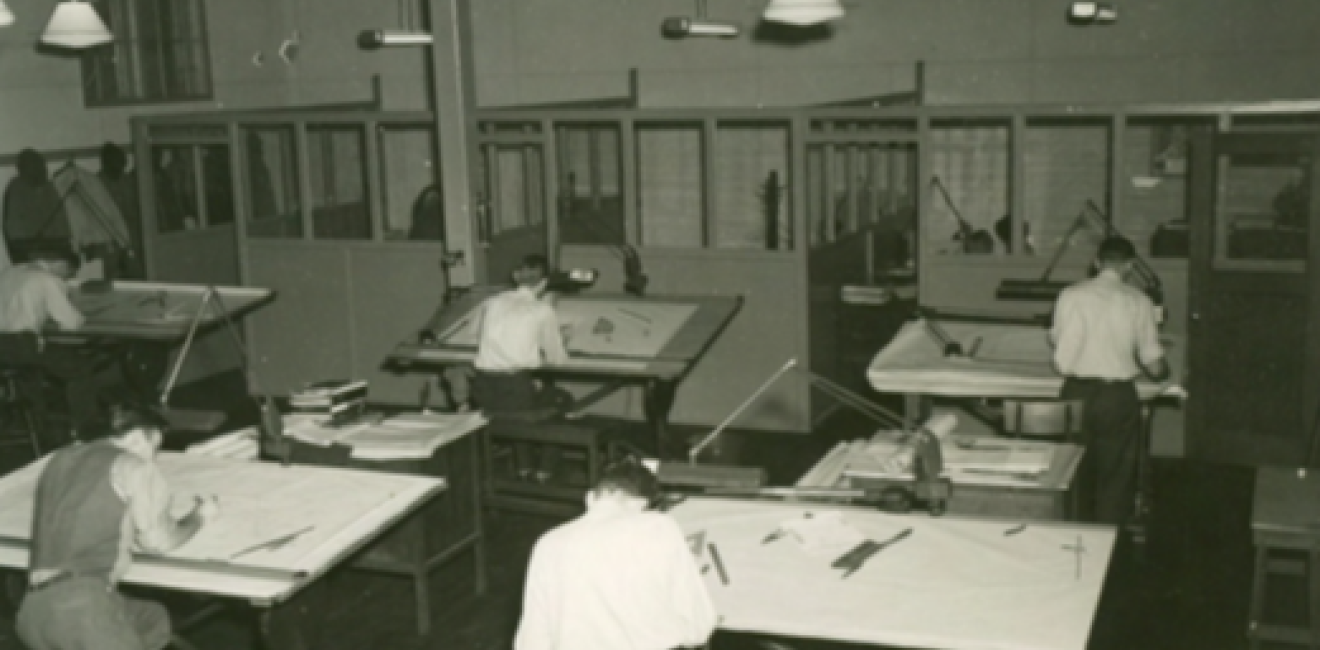Finding Engineers in American Foreign Policy
Engineers have helped extend American power in the world for generations. Keith Aksel explains how to find the documentary evidence of their contributions.

A blog of the History and Public Policy Program
Engineers have helped extend American power in the world for generations. Keith Aksel explains how to find the documentary evidence of their contributions.

Engineers have helped extend American power in the world for generations, but their archives are often hidden from public. Here's how to find them.
In the course of my dissertation research, I at one point found myself sitting in a sparse basement just outside of Saint Louis, Missouri, literally rummaging through trash bags of primary source material.
The documents had once belonged to a mechanical engineer named Pat Gifford, a man who had worked on post-World War II development projects abroad as a part of the American government’s efforts to steel poor countries from Soviet incursion. Here I uncovered a wealth of sources that were completely unavailable elsewhere: handwritten letters from Gifford’s travels, notebooks in which he chronicled his day-to-day activities, even photos he captured along the way—some of which are viewable on my project website: engineeringgeneration.weebly.com.
The sources in the Gifford family basement were exactly what I was looking for, and I came to realize that the dark basement itself seemed an appropriate setting for the figure I studied. Individual engineers, who have been so central to the expansion of American power in the world through the development of advancements like ballistic missiles and wireless communications, are still sometimes shadowy historical subjects. After all, who among us can name from memory even one of the engineers behind these technologies?
While researching individual engineers in foreign policy, I realized the difficulty in finding sources was a major reason so few know anything about the engineers that make American power so diffuse. Besides the most prominent engineers involved in American defense research (people such as General Leslie Groves and Vannevar Bush), the personal papers of everyday engineers are not typically held in the U.S. National Archives, or any formal archive at all for that matter. Still, sources from the workaday engineer in foreign policy do exist. However, finding them requires meticulous digging into family records or local historical societies. There are some interesting reasons for why this is the case.
In general, engineers rarely become famous enough to have their personal papers carefully filed. Engineers who worked on postwar development projects or defense research rarely became rich or politically powerful from their work. When they were recognized for their labors, engineers were not acknowledged as individuals but rather as a part of the larger group of technicians with which they collaborated.
Moreover, as a part of their professional ethos, Cold War engineers typically believed they served the greater good with their work. Fame and fortune usually took a backseat to that aim. As a result, engineers for the most part remained humbly middle class their entire lives, and gave little thought to their individual historical legacies. They certainly did not consider willing their personal papers to a formal archive. As these engineers grew old, retired or passed away, their personal records either remained in the family home, or were tossed out.
Consequently, small-town historical societies and family records are essential places for historians to look for engineering material. As it turns out, these sorts of repositories have become as important to my research as any formal archive in the world, providing everything from personal diaries to rare photographs not available in public archives.
Accessing these sources can itself become a bit of a process due to their obscurity, but tracking them down has been worth it. I have had the opportunity to utilize sources that have never been seen by historians before, often with rich detail (and none of the typical red-tape that comes with protected federal records).
Researching engineers isn’t always the most glamourous job, especially when you find yourself in a Saint Louis basement for hours at a time, but it is rewarding. Learning about the humans behind so many postwar American aid and defense programs has revealed new insights regarding engineers’ thoughts about their work and their broader significance in the scope of American foreign policy.
Uncovering such a story has proven more than worthy of a little inconvenience.

A leader in making key foreign policy records accessible and fostering informed scholarship, analysis, and discussion on international affairs, past and present. Read more


The Cold War International History Project supports the full and prompt release of historical materials by governments on all sides of the Cold War. Read more



